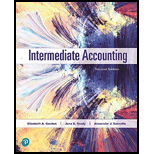
Cognitive Bias. A team of accounting students is working on a case where they are required to assess a set of information to determine the useful life used to depreciate a company’s machinery used to produce smart phone cases. The students have many pieces of information to analyze including:
- The company has used a 20-year useful life for the last several years.
- The industry average useful life for similar equipment is 15 years.
- The company purchased the equipment 5 years ago.
- The demand for smart phone cases has increased over the last several years.
- This year, the company has explored purchasing new machinery using a more efficient technology to produce the cases. This equipment would have a useful life of about 10 years.
- The average time that a machine is down for repairs has increased from 3 days to 12 days per year.
Following is part of the discussion at their first team meeting. Analyze the discussion and determine the type of cognitive bias most consistent with the statements made by each student, providing an explanation for your answer.
Discussion
Khalil initiated the discussion saying, “Information on what the other companies in the industry are using is what is relevant The industry average is an aggregate of all the useful lives used and represents the best overall estimate We need to use 15 years.”
Ashanti’s view was, “Even though the industry average is 15 years, the company’s history is most important here. The company’s history is the first piece of information presented because it is the most important. What another company is doing is just not relevant. So, we do not change the 20-year useful life.”
Amanda asserted, “This is obvious Of course, the answer is 10 years. Anyone can see that. All the facts support a 10-year useful life.”
Joe suggested, “Amanda is convinced the answer is 10 years and is sure about it. Khalil wants 15 years. I am not sure what the answer is, but let’s take the average of 12.5 years. Can we all agree to 12.5 years? We all should be happy with this answer.”
Trending nowThis is a popular solution!

Chapter 3 Solutions
Intermediate Accounting (2nd Edition)
 Cornerstones of Cost Management (Cornerstones Ser...AccountingISBN:9781305970663Author:Don R. Hansen, Maryanne M. MowenPublisher:Cengage LearningPrinciples of Accounting Volume 1AccountingISBN:9781947172685Author:OpenStaxPublisher:OpenStax College
Cornerstones of Cost Management (Cornerstones Ser...AccountingISBN:9781305970663Author:Don R. Hansen, Maryanne M. MowenPublisher:Cengage LearningPrinciples of Accounting Volume 1AccountingISBN:9781947172685Author:OpenStaxPublisher:OpenStax College Essentials of Business Analytics (MindTap Course ...StatisticsISBN:9781305627734Author:Jeffrey D. Camm, James J. Cochran, Michael J. Fry, Jeffrey W. Ohlmann, David R. AndersonPublisher:Cengage Learning
Essentials of Business Analytics (MindTap Course ...StatisticsISBN:9781305627734Author:Jeffrey D. Camm, James J. Cochran, Michael J. Fry, Jeffrey W. Ohlmann, David R. AndersonPublisher:Cengage Learning


